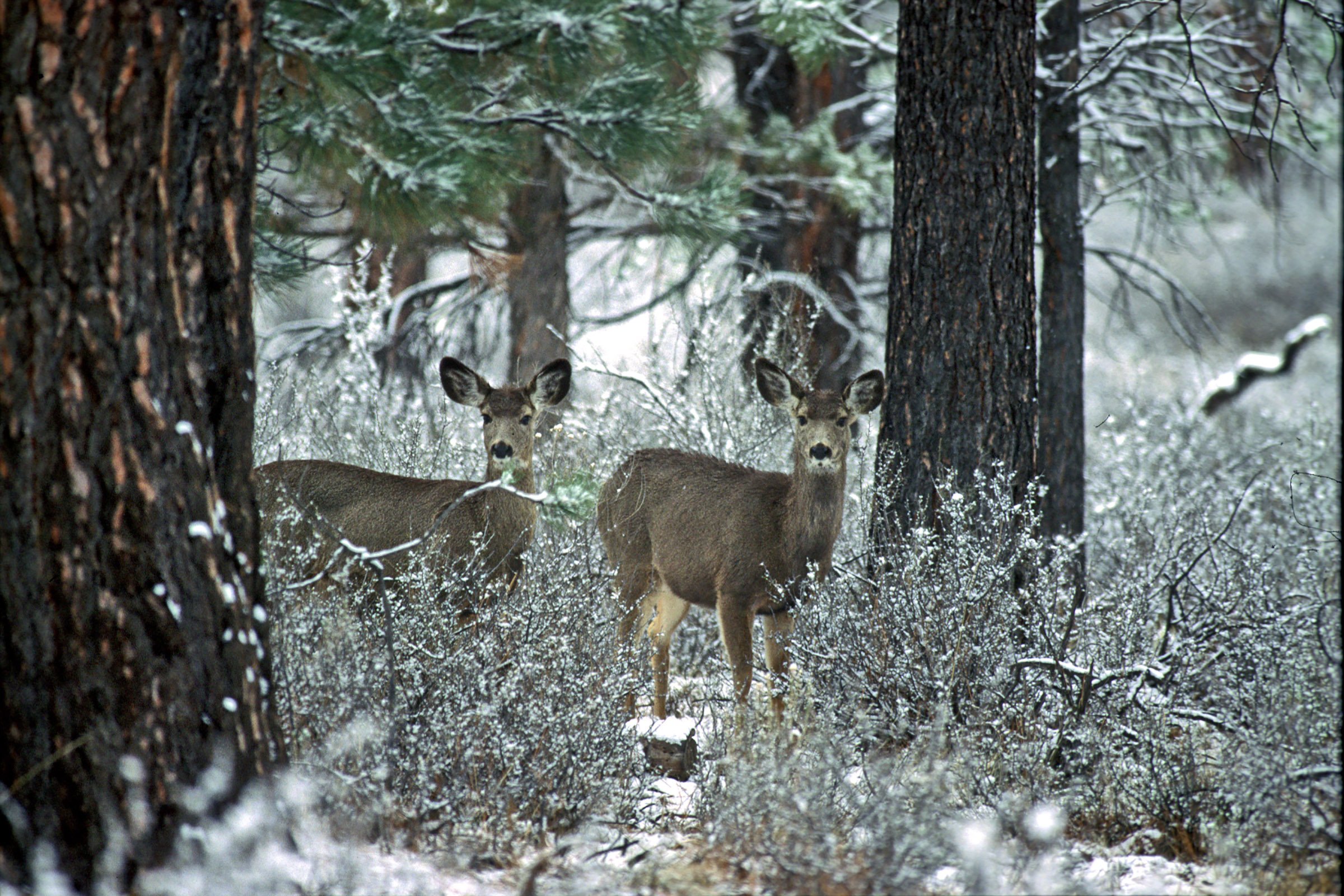
Wildlife & water in Skyline Forest
Key takeaway:
Many species of Central Oregon wildlife depend on the resources and habitat Skyline Forest provides for their very survival, including a stream network that supports the Deschutes River system with high-quality water.
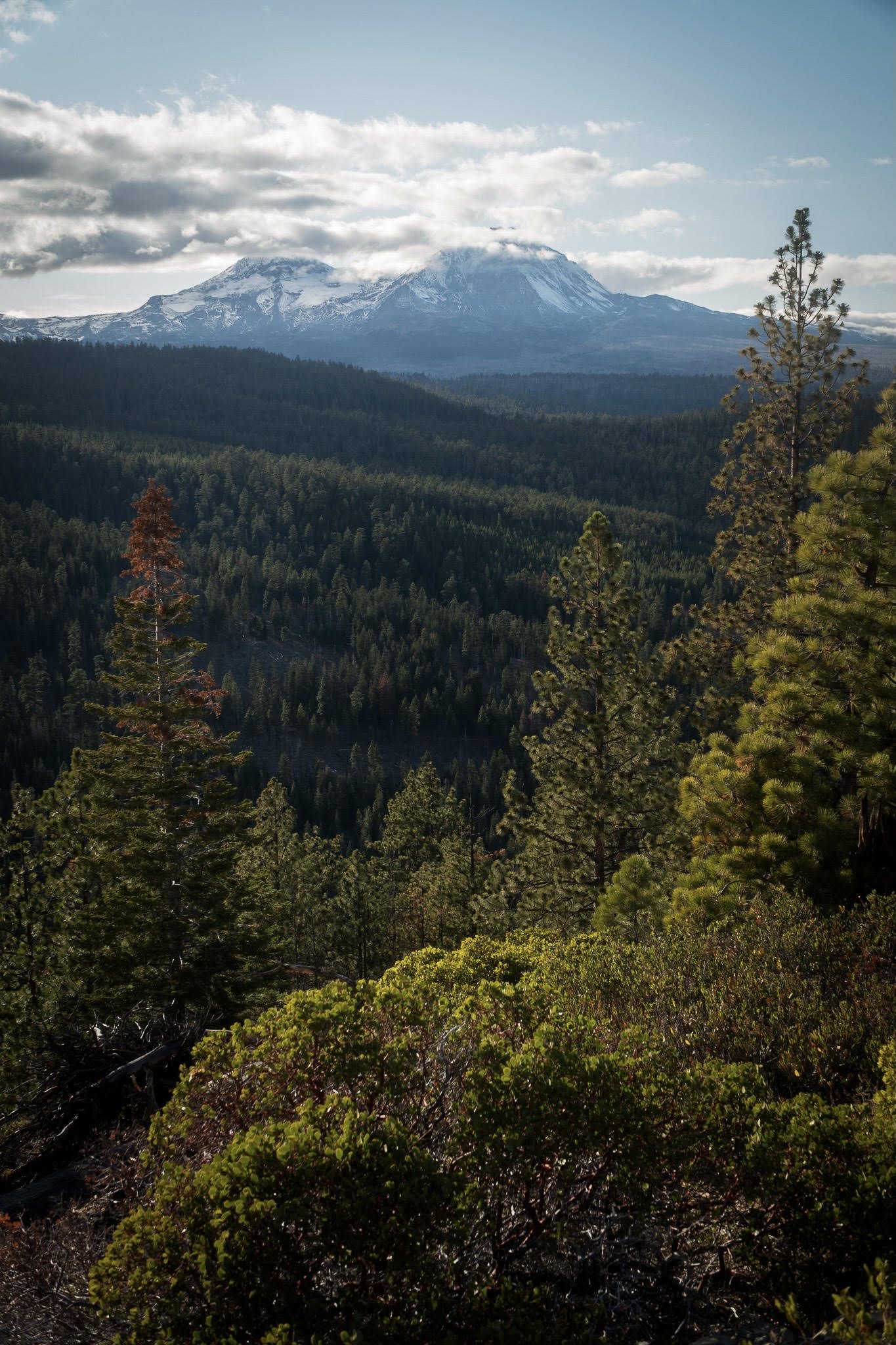
The plants & animals of Skyline Forest
Early each spring, Oregon grape is already abloom beneath the mixed-conifer overstory. Its yellow flowers supply native pollinators with critical early-season pollen. By late April, the increasingly rare Lewis’s Woodpecker is busy catching insects on the wing above stands of ponderosa where they also nest.
In the summertime, the shimmering banks of Bull Springs are adorned with a natural bouquet of wildflowers like western columbine, phacelia, and silvery lupine.
Skyline Forest often bears witness to an impressive boom of California tortoiseshell caterpillars during the summer, who munch through as much vegetation as they can before metamorphosing into myriad vibrant butterflies and taking flight on easterly winds.
Come autumn, the late-blooming western goldenrod invites all manner of buzzing insects to enjoy one last taste of lingering pollen as the weather takes a turn towards wintry days.
And as the cold of winter begins setting in, mule deer and elk - two of Central Oregon’s most iconic ungulates - descend along migration corridors from their summer range at higher elevations in the Cascades to spend winter in the wooded refuge of Skyline Forest.
California Tortoiseshell Butterfly Caterpillars in Skyline Forest.
Photo: Deschutes Land Trust / Randy Tomer
A California Tortoiseshell Butterfly in Skyline Forest.
Photo: Deschutes Land Trust / Sue Anderson
Skyline Forest provides essential winter range habitat for Central Oregon’s mule deer.
Photo: Andrew Walch, ODFW
A coyote moving through the ponderosa pine of Skyline Forest.
Photo: James Holk
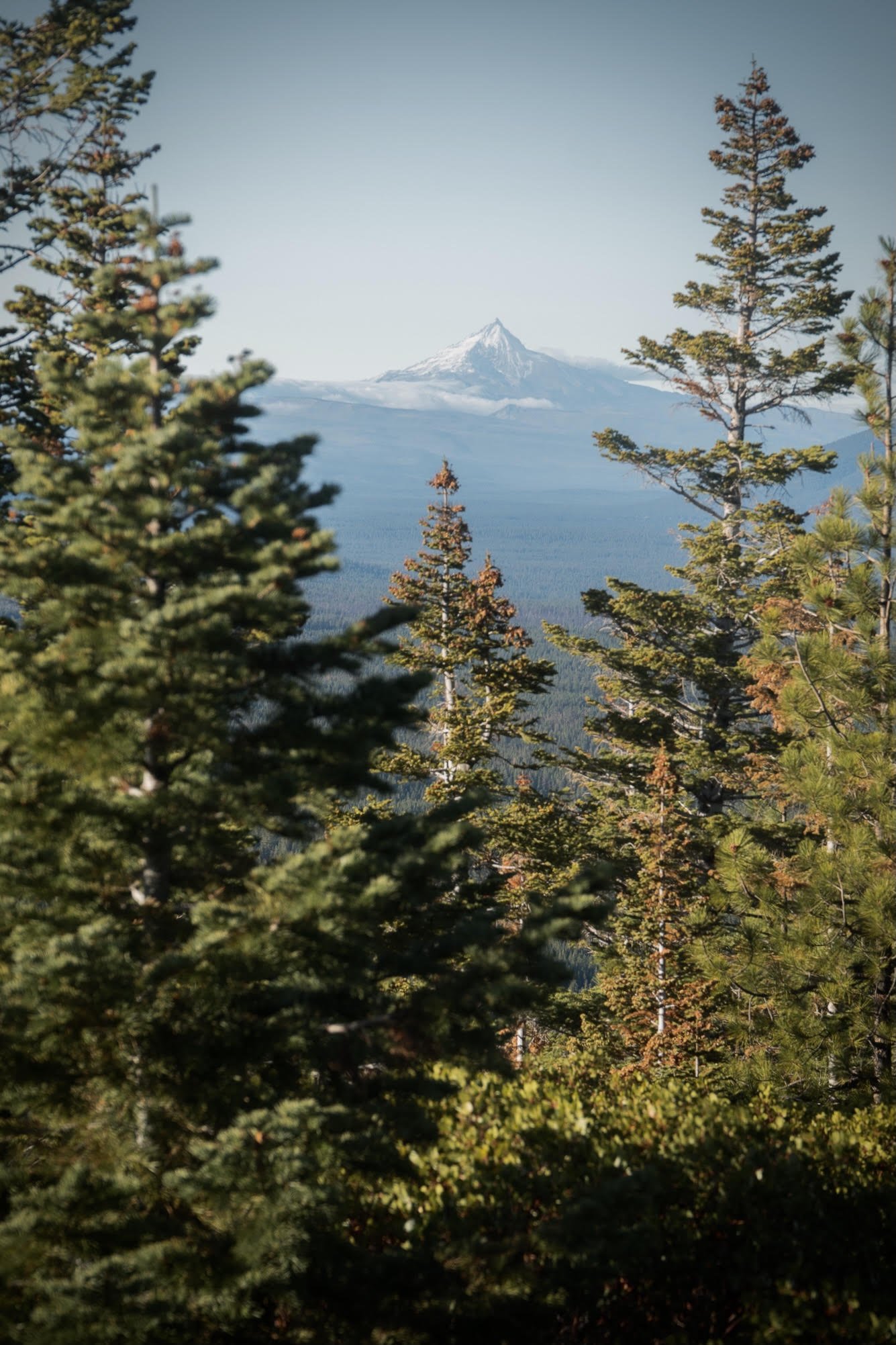
Central Oregon’s mule deer depend on Skyline Forest
Mule deer populations across Central Oregon have declined by 56% over the past 15 years. In order to maintain a healthy and regenerative mule deer population, the Oregon Department of Fish and Wildlife sets population goals for each herd. The Upper Deschutes Unit, which finds winter shelter in Skyline Forest, is 60% below its ideal population size of 2,000 mule deer.
Both mule deer and elk depend on Skyline Forest for their winter range habitat. A safe and accessible winter range allows deer and elk to escape some of the snow that falls at higher elevations and buries the bushes and grass they love to eat. The lower elevation of Skyline Forest provides them with easy-to-nibble vegetation to satisfy their nutritional requirements. It also offers the tree cover they need for hiding and protection from the elements. Still, their winter diet of bitterbrush and sagebrush is less nutritious than the lush grass and forbs they browse extensively at other times of the year.
In the winter, even with the intact and accessible winter range found in Skyline Forest, the fat reserves they spend all year building up are fully utilized and depleted as a necessary means of supplementing their compromised opportunities for nutrition. In short, these animals are forced to maintain a tenuous balance between energy conservation and strategic starvation. Surviving the harsh conditions of the Central Oregon winter exhausts mule deer and elk in a variety of ways that can lower birth rates and increase herd mortality. The quietude and safety of Skyline Forest allow them to survive until the respite of spring.
Because the Skyline Forest winter range is so important to these animals, there is a cooperative closure of the area by the Bureau of Land Management, the Forest Service, the Oregon Department of Fish and Wildlife, and cooperating landowners from December 1 until March 31 each year. The goal of the closure is to prioritize habitat and minimize any additional stress human interaction would cause for already taxed animals. A human encounter in their winter range will cause mule deer to flee to less ideal habitats and expend precious calories in their escape.
Climate change is also affecting the existence of migratory ungulates. Changing temperatures and precipitation patterns shift when plants grow and bloom, alter winter severity, exacerbate drought and wildfire, and change the natural conditions that wildlife has adapted to over millennia. These factors affect when and where food and water are available, reshape ecosystems and migration routes, and increase the threat of intact habitat being razed by wildfire. Unfortunately, East Cascades woodlands like Skyline Forest are especially vulnerable to the effects of a warming earth. As climate change continues to transform Central Oregon, migratory animals like mule deer and elk are going to need intact habitats like Skyline Forest more than ever.
A mule deer in its winter range. Photo: Joe Dudeck.
Large-scale, luxury development in Skyline Forest would harm this important mule deer habitat. The USFS Pacific Northwest Research Station found that Central Oregon mule deer populations are declining largely because of habitat loss. Taking into consideration the increasingly dire situation for this species, it is absolutely essential that this critical habitat in Skyline Forest is protected rather than developed.

Essential water for Central Oregon
The entirety of Skyline Forest’s 33,000 acres sits between Tumalo Creek and Whychus Creek. These waterways provide Bend and Sisters with drinking water and flow into the Deschutes River, providing vital clean, cold water for fish, wildlife, and Central Oregon communities.
The Deschutes River Basin is a groundwater-driven ecosystem. 80% of the water that flows through it to reach the Columbia River comes from groundwater. Surface water and groundwater are connected. Water on the surface seeps into the ground and recharges the underlying aquifer. Groundwater discharges to the surface via springs like Bull Springs in Skyline Forest. This process is vital to sustaining stream flows throughout the year.
Over a dozen intermittent and ephemeral streams flow through Skyline Forest, and water use by a large development would have the potential to harm the groundwater and springs that supply high-quality water to Tumalo Creek. Many of Central Oregon’s fish and wildlife species - from mule deer to steelhead trout to California tortoiseshell butterflies - depend on water that flows from the Cascade foothills through Skyline Forest.
According to the US Drought Monitor, 74% of Oregon is currently experiencing severe drought. Central Oregon is the epicenter of the worst effects, where the majority of drought conditions are classified as extreme or exceptional. Under these conditions, observed impacts include low river flows, tributaries running dry, low water oxygen levels, and high river water temperatures. Less water availability is a major contributor to the unnatural displacement of waterfowl and wildlife as they have to search harder for this most basic of necessities. Low oxygen levels and high water temperatures are also catastrophic and lethal to regional fisheries. The hydrologic strains on water sources will continue to be exacerbated by climate change, further compromising their ability to adequately provide livable conditions for fish and a supply of water for regional wildlife.
Central Oregon is in the midst of an unprecedented drought. Further large-scale, luxury development in close proximity to vital sources of surface water that are inherently connected to our region’s supply of groundwater could deprive these creeks, streams, and river systems of water flow, increasing water temperature and affecting water availability.
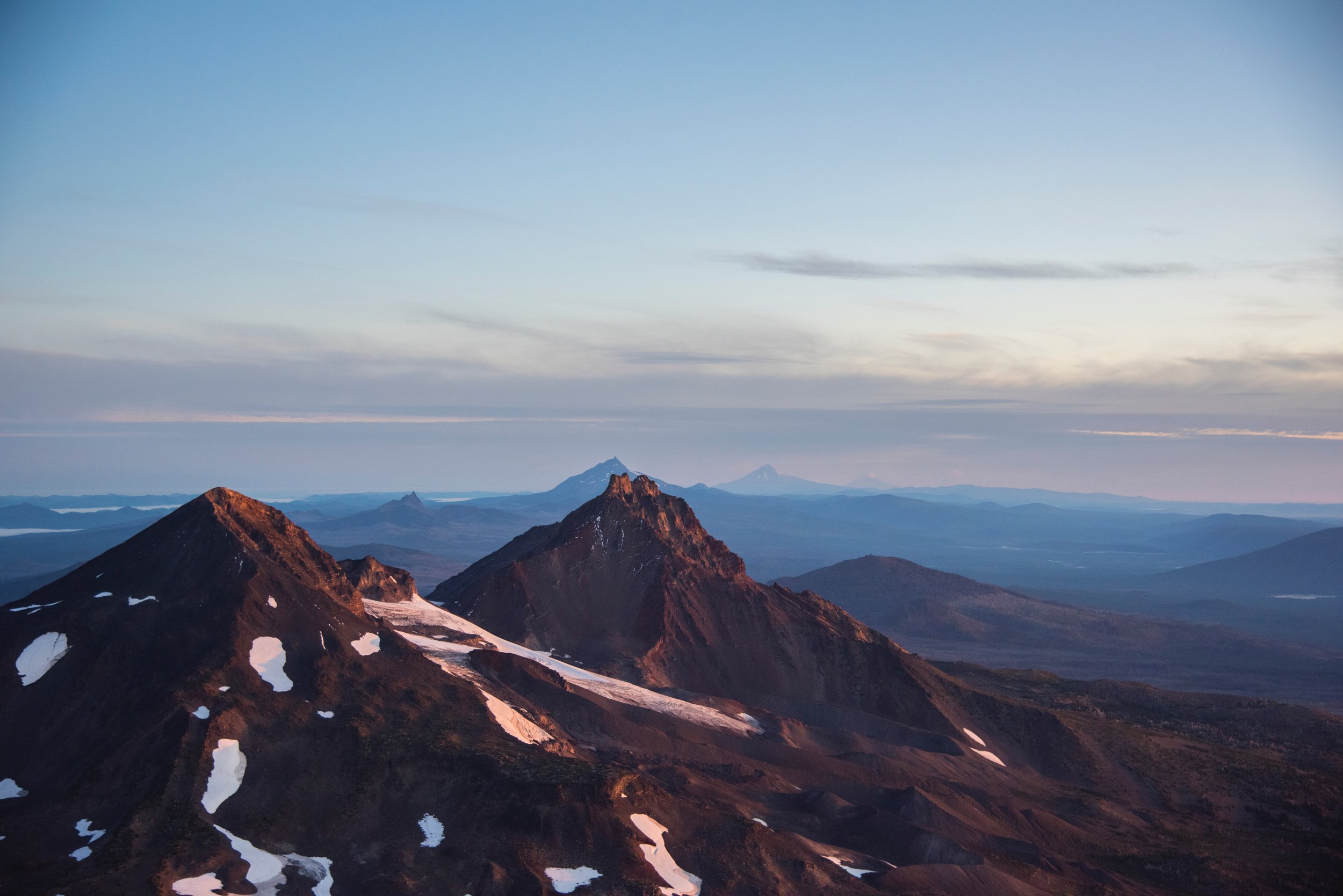
Connected since time immemorial
Skyline Forest is a complex, one-of-a-kind place that has connected and sustained countless generations of people, fish, and wildlife. This area is the traditional territory of the Northern Paiute, Wasco, and Warm Springs people - collectively known as the Confederated Tribes of Warm Springs. The plants and animals on these ancestral lands have been integral to tribal traditions and cultures since time immemorial.
Responsible harvesting of natural resources is central to practices of indigenous sovereignty. The Tribes’ ability to hunt big game like elk and deer holds cultural significance and is dependent on the regional health of both species. Indeed, a key goal of the Confederated Tribes’ Wildlife Department is to “increase deer, elk, bighorn sheep and mountain goat herds by 50 percent.” This regional goal is tied to habitat conservation efforts that protect vital mule deer and elk habitat.
Bull elk. Photo: Kim Kinion
“These hunting rights, and the wildlife resources on which they depend, constitute an invaluable and irreplaceable asset to the members of the Confederated Tribes. They form an important cultural, historical and economic asset of the Tribe and its members. The Tribal Council, in order to protect and preserve the tribal property for the benefit of tribal members both in the present and future generations and in the exercise of its sovereign powers, finds it necessary to regulate and control all hunting on the Warm Springs Reservation of Oregon and the exercise of treaty–reserved hunting rights by tribal members off the reservation.”
- Warm Springs Tribal Code, Chapter 350
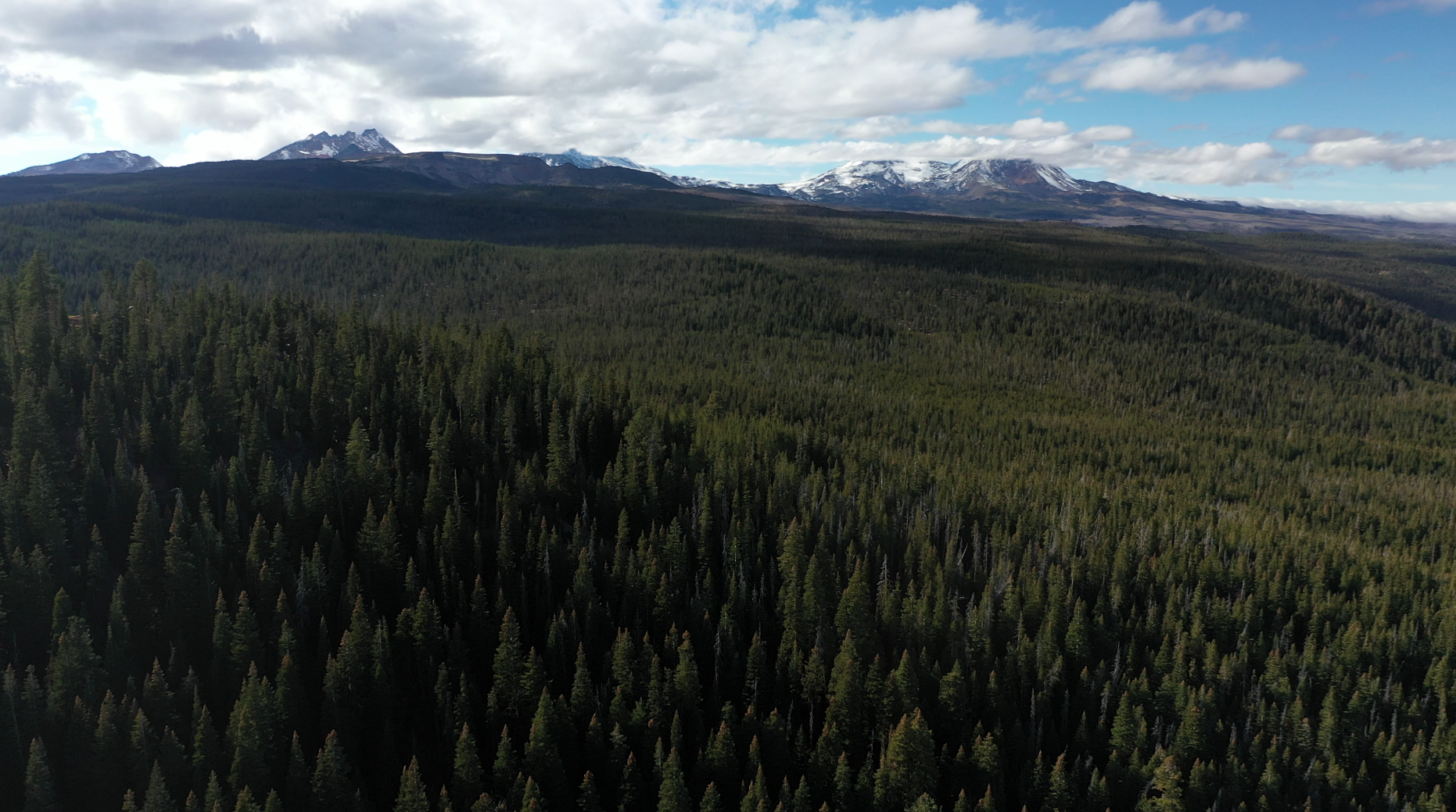
A brighter future for the wildlife of Skyline Forest
Central Oregon and Skyline Forest sustain thousands of interconnected species through their diverse ecosystems and natural resources. The wild animals of the Eastern Cascades that move through and reside in Skyline Forest deal with a seasonal suite of fundamentally rugged challenges to their survival - yet, they all have unique adaptations which have allowed them to flourish - until now.
With their populations in steep decline, mule deer and elk need our help to survive on the challenging path ahead. To create a future that sustains and supports the wildlife of this region, we need to preserve the best habitat left. It’s time to conserve Skyline Forest - not only for our communities but also for the beloved Central Oregon wildlife that is an intrinsic part of this place we call home.







